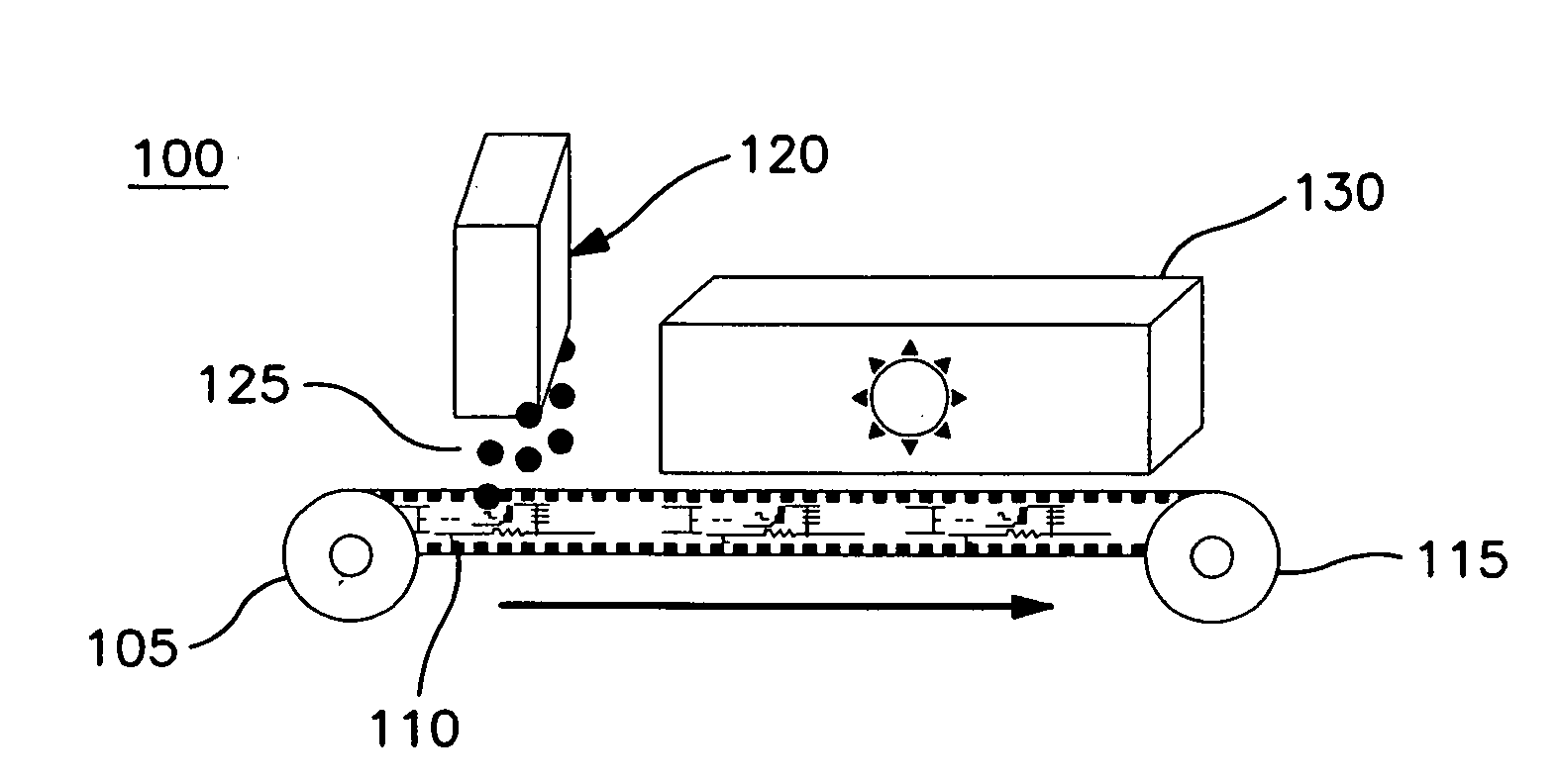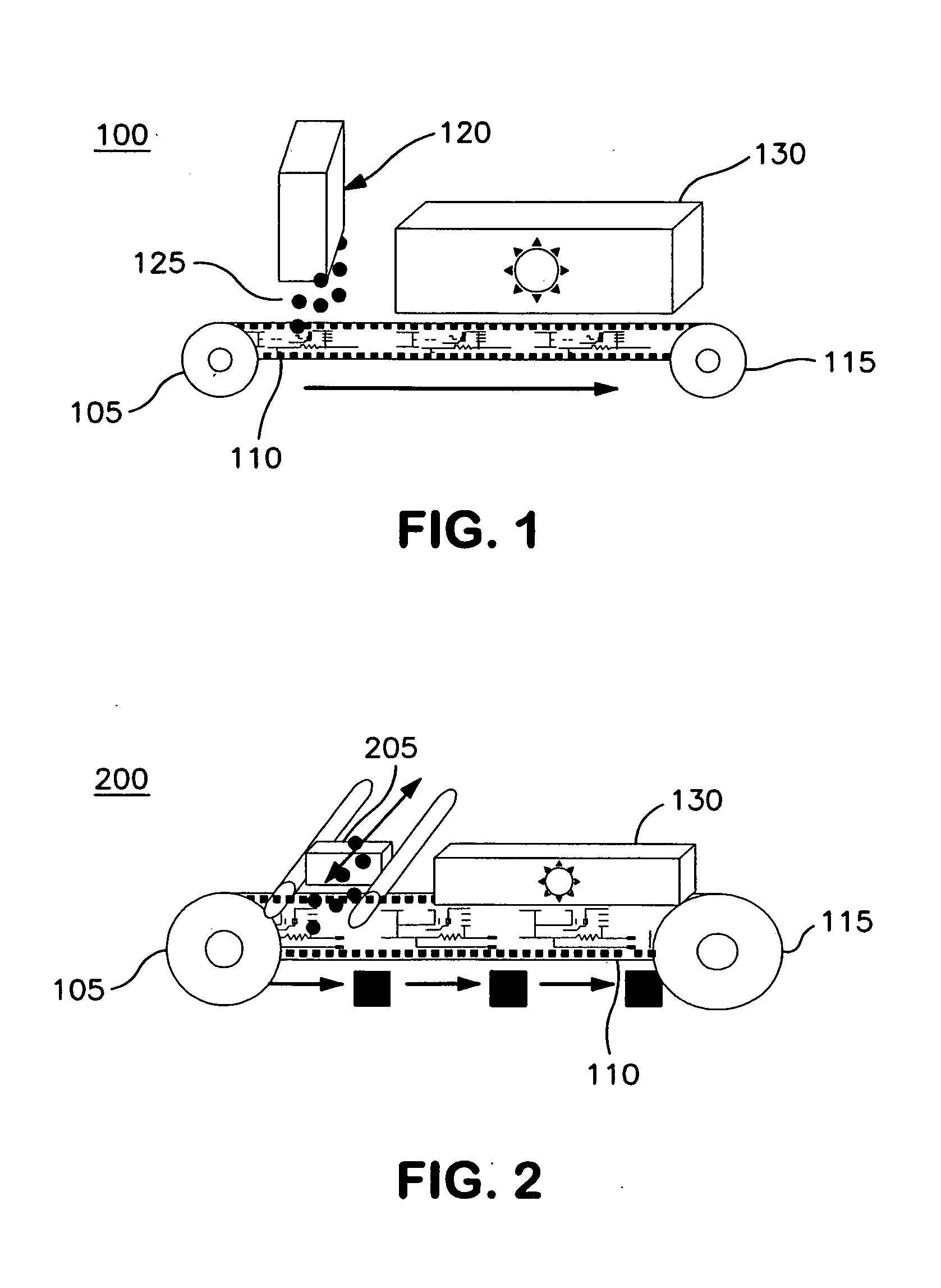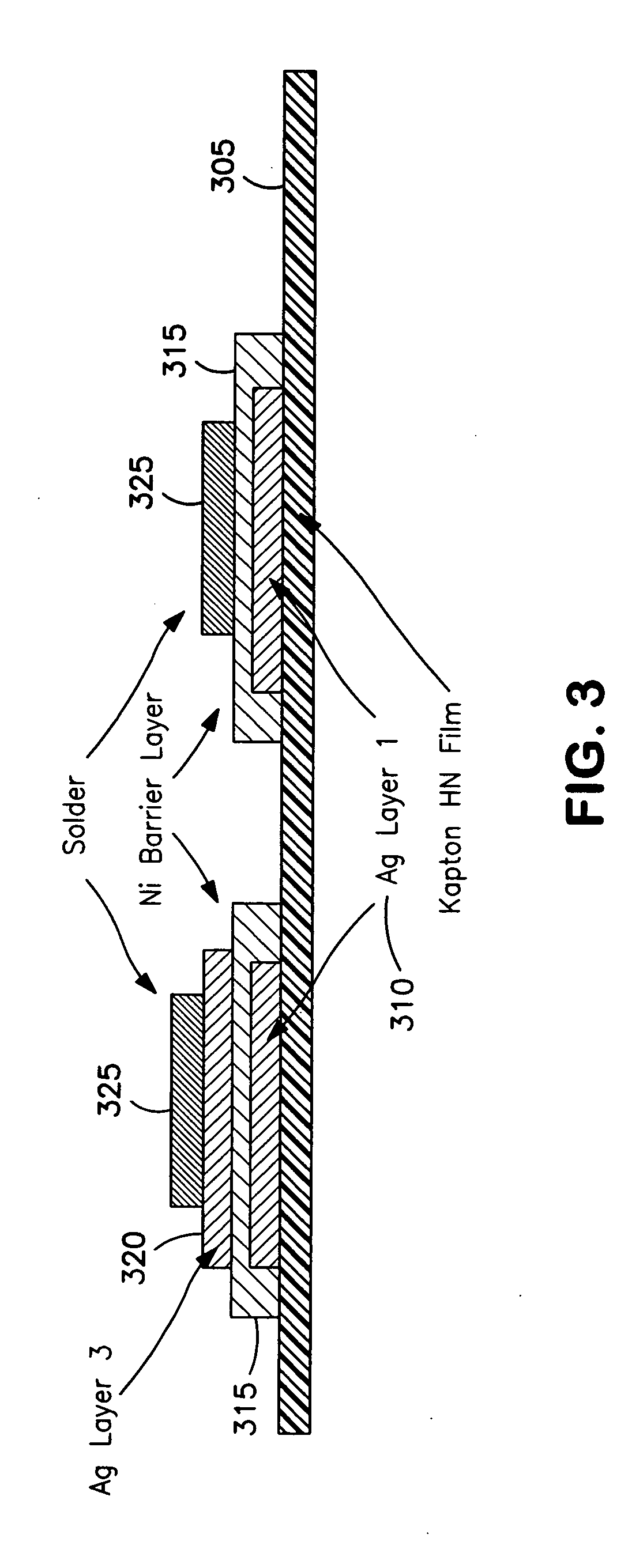Solderable pads utilizing nickel and silver nanoparticle ink jet inks
- Summary
- Abstract
- Description
- Claims
- Application Information
AI Technical Summary
Benefits of technology
Problems solved by technology
Method used
Image
Examples
Embodiment Construction
[0022]In one aspect, the invention provides an ink-jet printing system for printing a solderable conductive pad onto a substrate. The system comprises at least one print head and a curing station for curing an ink deposited onto the substrate. The system is configured to: deposit at least a first layer of a first ink onto the substrate; cure the first layer of the first ink; deposit at least an intermediate layer of a second ink on top of the cured first layer of the first ink; cure the intermediate layer of the second ink; deposit at least a last layer of the first ink on top of the cured intermediate layer of the second ink; and cure the last layer of the first ink. The first ink has a relatively high conductivity. The second ink has a relatively low conductivity. The first layer, the intermediate layer, and the last layer may be arranged such that when solder is applied to the last layer, the solder is prevented from leaching through to the first layer.
[0023]The first ink may com...
PUM
| Property | Measurement | Unit |
|---|---|---|
| Thickness | aaaaa | aaaaa |
| Thickness | aaaaa | aaaaa |
| Thickness | aaaaa | aaaaa |
Abstract
Description
Claims
Application Information
 Login to View More
Login to View More - R&D
- Intellectual Property
- Life Sciences
- Materials
- Tech Scout
- Unparalleled Data Quality
- Higher Quality Content
- 60% Fewer Hallucinations
Browse by: Latest US Patents, China's latest patents, Technical Efficacy Thesaurus, Application Domain, Technology Topic, Popular Technical Reports.
© 2025 PatSnap. All rights reserved.Legal|Privacy policy|Modern Slavery Act Transparency Statement|Sitemap|About US| Contact US: help@patsnap.com



